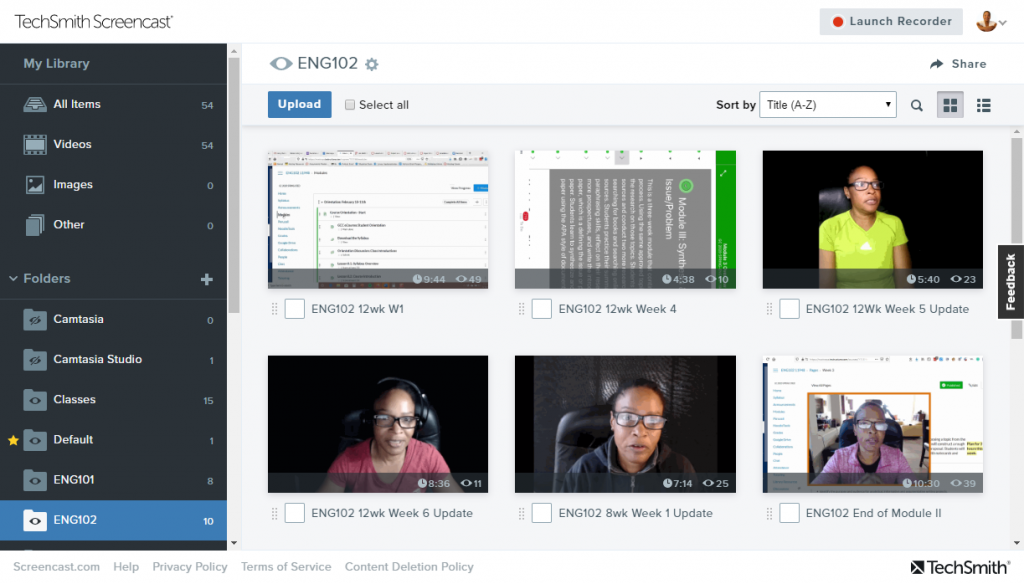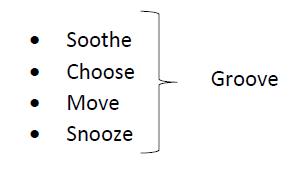People have great ideas all the time that they never share with others. They secretly harbor them in their heads. This is often where they die. We’re not always given a platform to share ideas, so that’s part of the reason. Another is we often feel our ideas might not be well received, so why bother. Or change is just hard for some and doing things the way we’ve always done them is commonplace. I tend to lean more on the side of people will listen if you bother to seek out the opportunity even if change never happens.

I have what I think is a good idea, and I’m going to share it with you. I don’t have any expectations for change, but at least my great idea is not going to die in my head. Also note, this post was conceived before our current situation with moving courses online. I started this while on Spring Break.
I’ve been teaching online for a long time – since 1998. I can see an inherent problem with how we offer online classes for our students. We open classes. Students rush to fill them, and all the online classes are full weeks before the semester begins. Sounds great, right? Well, it’s not. Not every student who signs up for an online class is prepared and ready for an online class. Many never make it past the first few days, finding it difficult to follow simple directions and get work completed. What do we do with these students? Some drop on their own, others stay and struggle for a while and eventually drop. The end game is that often after just one week a once full class is now left with multiple open spots. These are missed opportunities for students who were never given a chance to even register.
So here’s my idea. Open all online courses 3 days early and require students to complete an orientation. If students “No Show” or can’t complete simple to-do items, they are dropped as a “No Show” from the class. They were given an opportunity and failed. The student gets a full refund and there is now an open spot for another student to enroll. But we don’t allow late registration, so that doesn’t work. However, if we designated some courses as “rolling overload.” I made that term up. It means that faculty can designate the number of overload students permitted to enroll in their online courses. Presently faculty can teach an online course that doesn’t have the required max number of students (15) and are compensated from a rolling payscale, meaning I can teach ENH114 if I only have 10 students enrolled if I’m willing to be paid a certain percentage of the full load. That number used to be 2.04 load for 10 students. Five students would be 1.08 load. These are just examples at this point based on old numbers.
With this new plan, faculty could designate the number of overload students they are willing to teach, and the load for that class would increase by the number. Then after the three day period where students are given the orientation to complete, the actual course load is determined. Here’s the example: I teach ENG101 with a course load of 24 students. I designate 10 open spots for overload (2.04), so initially, my new full-time load is 15 + 2.04 = 17.04. After the three day orientation period, I only have 29 of the 34 students successfully make it through. My new load is 15+1.08 (5 extra students). We have technically helped 10 students. Five were shown they were not adequately prepared for an online class and were given a refund, and five more were given the opportunity to take a class that previously would have been full and closed. And I am compensated for the extra students in my class.
So let’s look at some real numbers, and I’ll show why I know this will work. For the last 5+ years, I’ve been keeping track of students enrolled during the first two weeks of my online classes. This semester I have 5 online classes. The two online 8-week ENG101 classes ended last week, and two new ENG102 online 8 week classes began this week. I already knew that at least 3 of the students enrolled in the ENG102 courses were not eligible to take the class, but I couldn’t drop them from the ENG102 because the semester wasn’t over yet for the ENG101. They hadn’t officially failed ENG101 yet, but trust me; they failed. So there were 3 wasted spots already. By the time all the official stuff happened, we are already in the no late registration stage. But let’s focus on the two ENG101 courses. I started with 48 students and I ended with 34. After the first week, I had a total of 43 students. So 5 enrollments were lost within the first 3 days. Most of the other 9 students were lost within the next two weeks.
Here’s the best part. I can predict after one week which students will not succeed in the online course. As they complete the 7 step orientation, I rank them in order of how quickly and successfully they complete the orientation. The names at the top completed it quickly with very little difficulty. Names toward the bottom are students who didn’t get started right away, required several emails to prod them, and didn’t complete things in a successful manner. The majority of the 9 students who dropped or were dropped after the first week were at the bottom of this list. Only 3 students in the top 32 have dropped or been dropped from the class, while the bottom 7 have either dropped or are failing the course.
Now let’s look at what is happening right this minute in my two ENG102 courses. The orientation was due last night. Both classes were full before we started. I add one off the waitlist and 2 students from my previous ENG101 that just ended, so I started with 51. One disappeared right when I opened the class on Wednesday of Spring Break. Poof. Vanished. Down to 50. Today a week later, three days into the 8-week session, I have 44 students. What happened to those 6 students? Two more dropped on their own. One said she had too much going on to handle a new class right now. Three were complete no-shows. I emailed daily and then called to no responses. They were dropped with a 43 (no-show) this morning. The last was a difficult decision but he was dropped with a 43 because he couldn’t figure out how to complete the orientation and never responded to any of my emails or texts offering help.
So even with all the intervention I still ended up for 4 open spots that didn’t get filled for this 8-week session. I bet there are a lot of students out there right now that wished they’d just signed up for an online class. But it’s too late now, as those 44 students are already deep into the course discussing personal freedoms and learning about writing arguments. Anyone who tried to join now would be too far behind for it to be a fair challenge. The system is just not designed well enough to give more students the opportunity to take online courses. Who knows if my idea would work. It’s certainly not without flaws. It’s just an idea, and now that it’s not dead in my head, I’m good with letting it go. Fly away idea. 
And Write6x6 is a wrap. I hope you enjoyed my brain dumps over the past 6 weeks. I’ll try not to wait until next year to post again.









